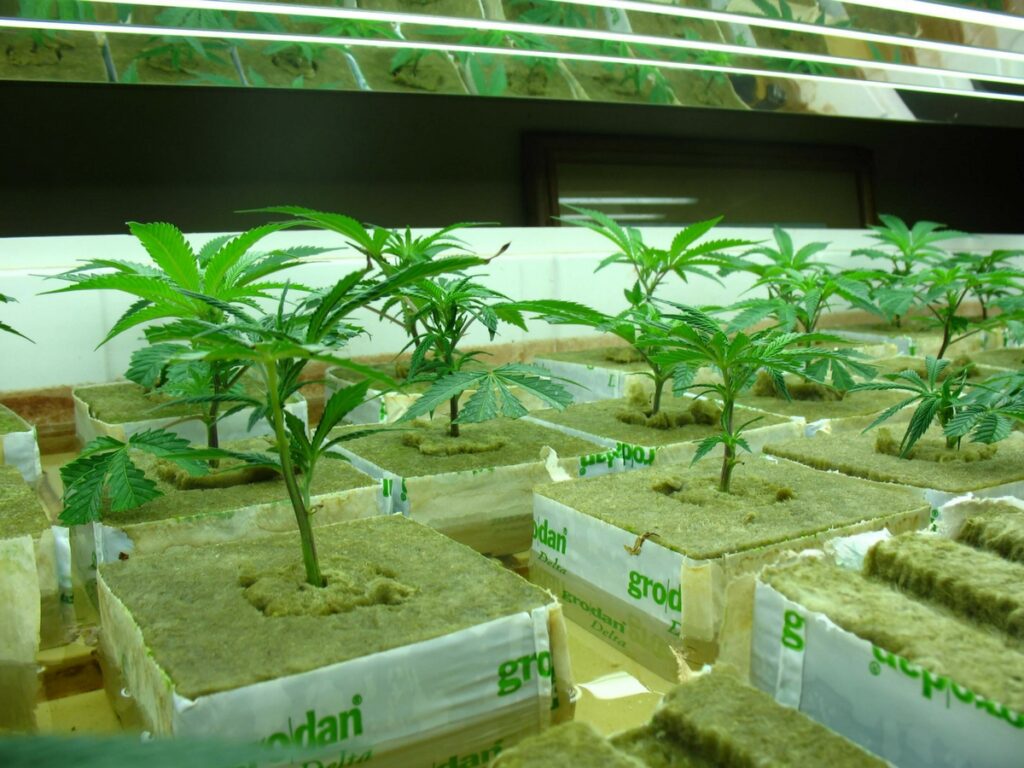
Intake and transport of materials
Water, and the nutrients dissolved in it (salts), is absorbed through the root hairs of the plant. The condition of the soil plays an important role. Hard dirt allows little space for water to reach the root hairs, a looser soil has much more space, while rockwool substrate can guarantee a good water supply. Root hairs are very important. When they don’t work well, the plant receives too little water and food. Growth is retarded. Root hairs are very sensitive; they can easily be damaged by exposure to air and light. Moreover, you can ruin them by careless transplanting, or just by exposure. The intake of water and nutrients requires energy from the plant, so oxygen and glucose are necessary. Ultimately, temperature is a limiting factor. Even if you take care to provide sufficient water and nutrients, the growth of the plant will be impeded if the ground temperature is too low. This is one of the reasons why most plants outside grow very slowly during the winter. The transport of water and nutrients insures that these materials end up in the leaves. Two forces are responsible for this: the suction power of the leaves, (they lose moisture by evaporation, causing suction to occur), and so-called root pressure. Root pressure can be observed when we cut off a branch of a tree in the spring. Moisture comes from the ‘wound’, and we call this the plant’s sap. The suction force of the leaves depends on the evaporation of water through the leaves. Stomata are responsible for this evaporation process. The stomata can open and close. Next to the evaporation of water, they provide principally for the intake of carbon dioxide (CO2) from the air. They also issue the oxygen which is produced. In the previous paragraph, we have seen that plants lose their sturdiness if they lose too much water. The stomata dispose of a mechanism to prevent that: they can close. Generally, a stoma will be open if there is light, (thus providing for CO2 intake, and for optimal suction power of the leaves), and closed if it’s dark (when no CO2-intake, or evaporation is necessary). If the air is extremely dry (dry, hot, mid-summer days!), the stomata can also close during the day. For stomata to work properly, a clean surroundings is necessary, since a stoma can become blocked with dirt particles. Sufficient potassium (nutrients!) are also needed.

